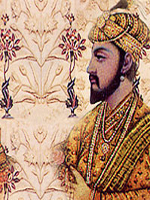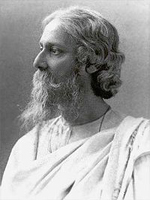 |
|
|
|
Posted by P.C. |
AGRA
(India)
Taj Mahal (Jewel Palace)
It is considered a symbol of India and one of the wonders of the world. India has made its symbol, travel agencies a tremendous visual impact of testimonial, for those who see with their eyes is a sign of the elusive beauty of the story. This beautiful monument in 1983 was declared World Heritage by UNESCO. Its image has always fascinated travelers, artists and poets for its unparalleled beauty and romance that lies between its minarets.
From an artistic point of view, it is considered a classic example of Mughal art, a fusion of Indian and Islamic styles of this suggestion and reach the highest perfection. Built by Emperor Shah Jahan (January 5, 1592 – January 22, 1666) to house the remains of his beloved wife Mumtaz Mahal (Jewel of the Palace) is a clear sign of the pomp and magnificence of the Mughal Empire reached its peak. The design was being entrusted to a group of architects and artists among the best in India, Turkey and Persia, according to some researchers the hard stone ornaments were made by Florentine artisans.
|
|
Finished in 1648, the Taj Mahal cost the Mughal exchequer 32 million rupees. The Taj Mahal has been described by the poet Sir Edwin Arnold, as"Not a piece of architecture, as other buildings are, but the pr oud passions of an emperor's love wrought in living stones."
The beauty of the pietra dura of the Taj Mahal and of the forts at Agra and Delhi still inspire numerous artists from all over the world. Moreover, write Okada and Joshi, the four canals clearly symbolize the four rivers of Paradise mentioned in the Holy Qur'an and seen by the Prophet Muhammed during his miraculous ascent to Paradise (al-Mi'raj). The symbolic and allegorical nature of the garden and the canals at Taj Mahal is not surprising considering the funereal nature of the monument it enshrines. The Qur'anic inscription on the southern facade of the Main Gate gives unequivocal credence to the comparison of the Taj Mahal with the Garden of Paradise, where the appeased souls of the dead find their ultimate refuge. This inscription says:
(It will be said to the pious): O (you) the one in
(complete) rest and satisfaction!
Come back to your Lord, -- well-pleased (yourself)
and well-pleasing unto him!
Enter you, then, among My honored slaves,
And enter you My Paradise!
- The Holy Qur'an, Surah Al-Fajr: 89:27-30
|
The story goes that Emperor Shah Jahan, overwhelmed by the death of his wife, he built in her memory, this unique mausoleum. And the legend (but perhaps not law) that says that the Emperor himself, in his last seven years of life, strongly ill, was imprisoned by his son Aurangzeb in Agra's Red Fort here and spent many hours gazing at the Taj Mahal with his wife's grave.
Emperor Shah Jahan himself described the Taj in these words:
Should guilty seek asylum here,
Like one pardoned, he becomes free from sin.
Should a sinner make his way to this mansion,
All his past sins are to be washed away.
The sight of this mansion creates sorrowing sighs;
And the sun and the moon shed tears from their eyes.
In this world this edifice has been made;
To display thereby the creator's glory.
Among 17th-century Mughal court poets, the most outstanding is Abū Ṭālib Kalīm (died 1651), who came from Hamadan. Abounding in descriptive passages of great virtuosity, his poignant and often pessimistic verses have become proverbial; wishing to pay homage to the virtuosity of the imperial lapidaries, wrote these verses to glorify their art:
They set stone flowers in the marble
That by their color, if not their perfume,
surpass real flowers.
A more poetic story relates that once a year, during the rainy season, a single drop of water falls on the cenotaph, as inspired by Rabindranath Tagore's description of the tomb as "one tear-drop...upon the cheek of time".
|
|

Shah Jahan
|

Aurangzeb
|

Rabindranath Tagore
|
Lal Qila (Fort Red)
Also Fort Red is a UNESCO World Heritage site located in Agra. It is about 2.5 km northwest of its more famous sister monument, the Taj Mahal. The fort can be more accurately described as a walled city. It is one of the most important Fort in India; originally was a brick fort,held by the sikarwar and it was mentioned for the first time in 1080 AD when a Ghanznavide force captured it.
It was only during the reign of Shah Jahan, that the site took on its current state. Shah Jahan tended to have buildings made from white marble, often inlaid with gold or semi-precious gems. He destroyed some of the earlier buildings inside the fort in order to make his own.
At the end of his life, Shah Jahan was imprisoned by in the fort. It is rumored that Shah Jahan died in Muasamman Burj, a tower with a marble balcony with a view of the Taj Mahal. |
|